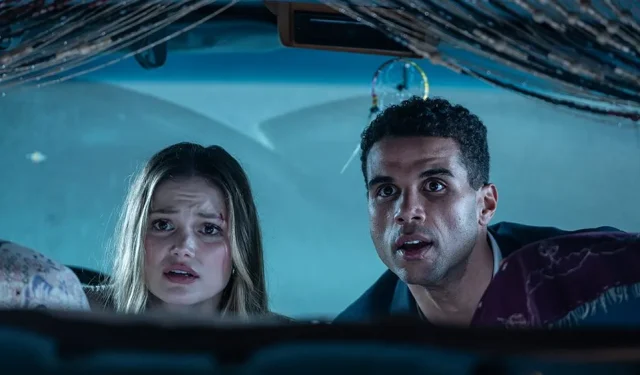The Empathetic Heart of Cinema
Movies serve as a profound love language. It’s an elaborate undertaking, as countless individuals invest years of dedication, effort, and personal sacrifice into producing cinematic art for audiences. Roger Ebert once referred to films as an “empathy machine,” enabling us to grasp some level of compassion and understanding—even if not love itself. This innate capacity for empathy exists across all film genres, suggesting that emotional connections can transcend the boundaries of traditional categorization.
This notion applies even to those films that Ebert dubbed “Dead Teenager Movies,” commonly recognized as slasher films. Recent entries in this niche have demonstrated that the slasher genre can indeed evoke compassion, albeit sometimes requiring viewers to overlook substantial bloodshed.
Love and Horror Intertwined
The plot of the latest slasher film revolves around co-workers Ally (played by Olivia Holt) and Jay (Mason Gooding), who become the focus of a Valentine’s Day-themed serial killer known as Heart Eyes. This narrative is unique, fusing elements of horror with romantic comedy, standing out among the limited selection of Valentine’s themed horror films such as My Bloody Valentine (1981) and Valentine (2001). Director Christopher Landon expresses confidence in the originality of this project, stating, “I felt like we were all approaching this in a pretty unique way that felt fresh… This is a rom-com that keeps getting invaded by a slasher.”
Landon, known for his work on films like Happy Death Day (2017) and Freaky (2020), along with writer Michael Kennedy, have become synonymous with unearthing and recontextualizing tropes within the slasher genre. Their films blend popular concepts from classic comedies with the conventions of slasher flicks, embracing characters that carry depth and complexity rather than just serving as fodder for the killer. This aligns with the emerging trend in modern slasher films, as seen in Totally Killer (2023) and the Fear Street trilogy (2021), which prioritize character development over mere body counts.
Beyond the Critics’ Lens
Ebert’s dismissal of many slasher films from the 1980s often sparked debates among horror enthusiasts. His critical stance on films such as Friday the 13th Part 2 and Silent Night, Deadly Night revealed a moralistic lens that left some fans feeling misunderstood. However, upon reflection, I have come to appreciate the slasher films he championed, such as Halloween (1978) and Scream (1996), recognizing that these movies provided well-developed characters that audiences could empathize with. When filmmakers invest in character complexity, it offers opportunities for viewers to engage emotionally beyond the spectacle of horror.
In the film Heart Eyes, the writing team ensures that neither the plot nor the characters dismiss the legacy of earlier slasher films. They convey a heartfelt appreciation for iconic works while striving to elevate the genre. According to Murphy, one of the writers, “I love Friday the 13th Part VI; it’s my favorite one to talk about.” He emphasizes the ferocity of the Heart Eyes Killer, drawing parallels to Jason while embedding humor throughout the narrative.
Empathy in Horror
Influenced significantly by Wes Craven’s work, the writers of Heart Eyes create a film that foregrounds character relationships—inspired by Craven’s capacity to showcase character worth beyond their mortality in the franchise’s evolution. This contrasting perspective is crucial, affirming that the stakes in horror extend beyond the count of fatalities, as survivors require their own narratives post-horror.
Kennedy, whose appreciation for the genre blossomed later in life, cites Kevin Williamson’s writing in Scream as pivotal for his approach. He highlights that Ally and Jay showcase individuality, noting, “[They] really pop as people and not things.” Landon echoes this sentiment, eager to present flawed yet relatable characters reflective of genuine human experience.
In today’s climate, where dehumanization often permeates societal conversations, recognizing characters as individuals becomes vital, especially in horror—a genre traditionally focused on fear and violence. As the landscape of horror expands, integrating empathy into these narratives ensures that audiences can relate to stories containing both terror and authenticity.
Conclusion
As the horror genre continues to evolve, establishing space for explicit empathy only enhances the audience’s love for it. By navigating the balance between fear and human connection, filmmakers can craft compelling stories that resonate deeply with viewers across generations.


